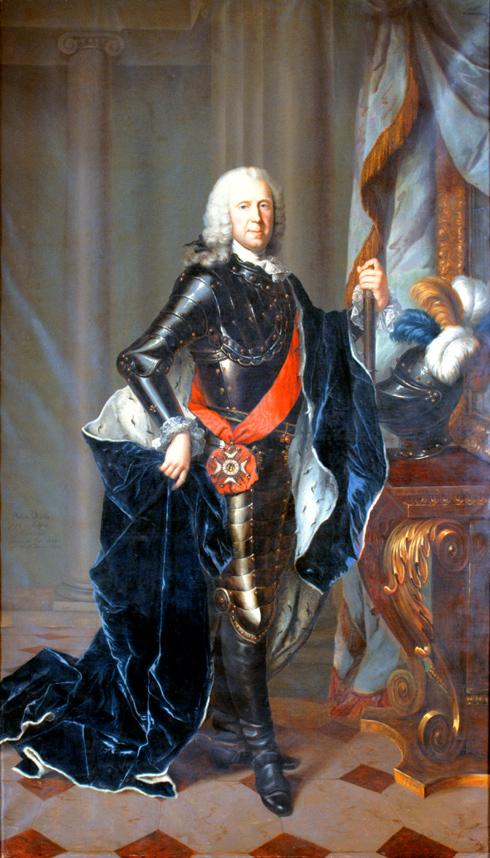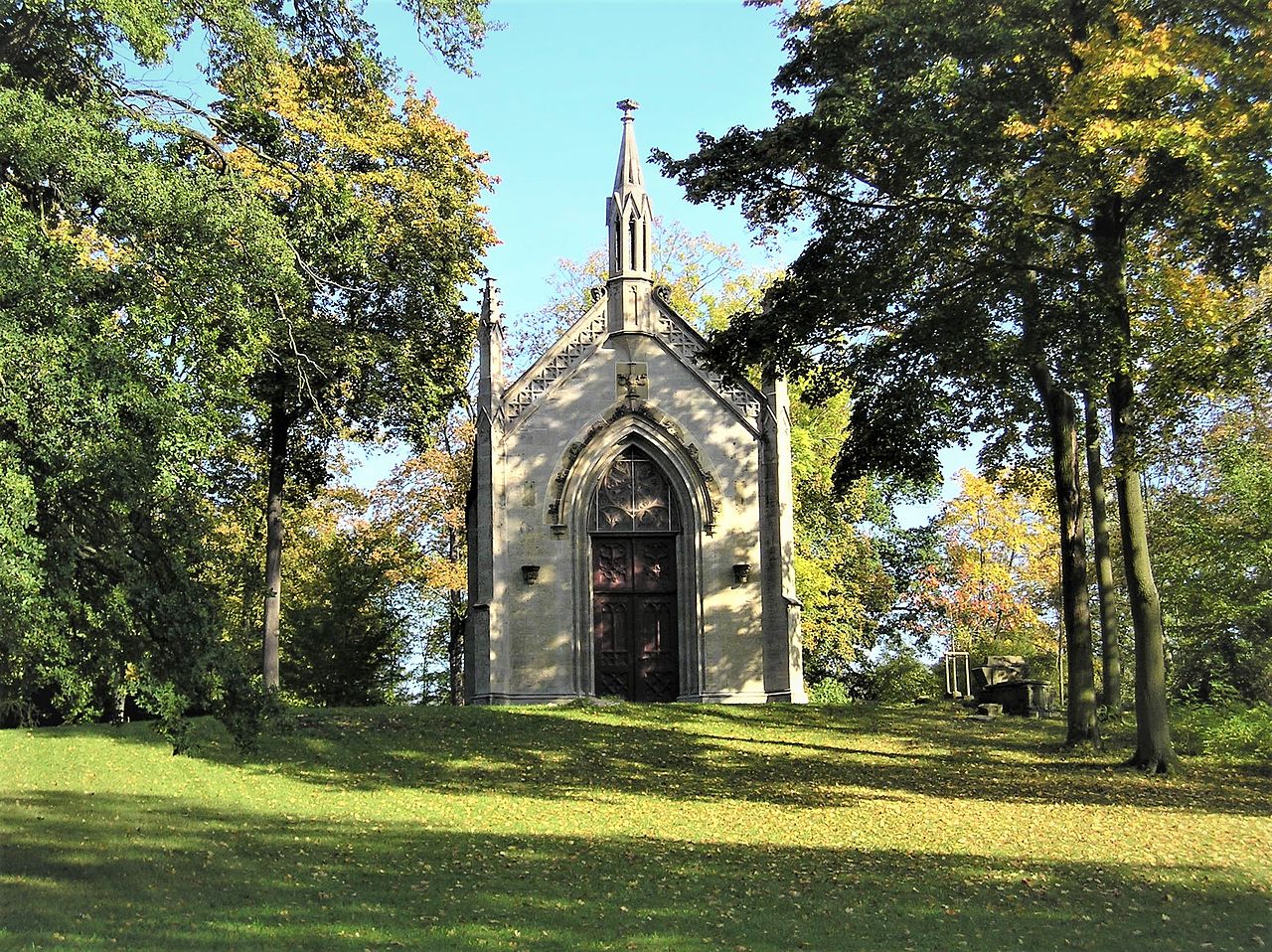by Scott Mehl © Unofficial Royalty 2018
Duchy of Saxe-Meiningen: On March 26, 1675, Ernst I, Duke of Saxe-Gotha-Altenburg died. Initially, his seven sons collectively governed the Duchy of Saxe-Gotha-Altenburg, as set out in their father’s will. On February 24, 1680, the seven brothers concluded a treaty of separation, with each brother getting a portion of the Duchy of Saxe-Gotha Altenburg and becoming a Duke. One of the seven new duchies was the Duchy of Saxe-Meinigen and Bernhard, one of the seven sons of Ernst I, Duke of Saxe-Gotha-Altenburg became the first Duke of Saxe-Meinigen.
On November 9, 1918, Wilhelm II abdicated as German Emperor and King of Prussia in the wake of the November Revolution. Bernhard III, the last Duke of Saxe-Meiningen abdicated the next day due to pressure from the Meininger Workers and Soldiers Council. His half-brother Ernst waived his succession rights on November 12, 1918, officially ending the monarchy of the Duchy of Saxe-Meiningen. Today the territory that encompassed the Duchy of Saxe-Meiningen is in the German state of Thuringia.
********************

Ernst Ludwig I, Duke of Saxe-Meiningen; Credit – Wikipedia
Ernst Ludwig I, Duke of Saxe-Meiningen was born at Friedenstein Palace in Gotha, Duchy of Saxe-Gotha, now in Thuringia, Germany, on October 7, 1672. The eldest child of Bernhard I, Duke of Saxe-Meiningen and his first wife, Marie Hedwig of Hesse-Darmstadt, Ernst Ludwig had six younger siblings:
- Bernhard (1673-1694) – unmarried
- Johann Ernst (1674-1675) – died in infancy
- Marie Elisabeth (born and died 1676) – died in infancy
- Johann Georg (1677-1678) – died in infancy
- Friedrich Wilhelm, Duke of Saxe-Meiningen (1679-1746) – unmarried
- Georg Ernst (1680-1699) – unmarried
Ernst Ludwig also had five half-siblings from his father’s second marriage to Elisabeth Eleonore of Brunswick-Wolfenbüttel:
An artistically gifted child, Ernst Ludwig studied at the Rudolph-Antoniana Knight Academy in Wolfenbüttel. He began a military career in 1689, leading several regiments against France, and serving with troops led by Ludwig Wilhelm, Margrave of Baden-Baden, helping to conquer the city of Landau. He was later raised to the rank of Imperial Field Marshal Lieutenant.

Dorothea Maria of Saxe-Gotha-Altenburg; Credit: Wikipedia
On September 19, 1704, in Gotha, Duchy of Saxe-Gotha Altenburg, now in Thuringia, Germany, Ernst Ludwig married his first cousin, Dorothea Maria of Saxe-Gotha-Altenburg. She was the daughter of Friedrich I, Duke of Saxe-Gotha-Altenburg and Magdalena Sibylla of Saxe-Weissenfels. Together they had five children before Dorothea Maria died in April 1713:
Ernst Ludwig succeeded his father, Bernhard I, as Duke of Saxe-Meiningen. Unlike his own father who had divided his territories among his sons, Bernhard stipulated in his will that the duchy should remain united. However, he also wanted his sons to rule jointly, which none of them wanted to do. Ernst Ludwig, as the eldest son, felt that the throne should go solely to him and his heirs, which caused a rift between him and his brothers. Eventually, he reached an agreement with them which gave him sole reign. His two remaining brothers later ruled after his death, in the guardianship of Ernst Ludwig’s sons.

Elisabeth Sophie of Brandenburg; Credit – Wikipedia
On June 3, 1714, just over a year after the death of his first wife, Ernst Ludwig married Elisabeth Sophie of Brandenburg, at Schloss Ehrenburg in Coburg, Duchy of Saxe-Coburg, now in the German state of Bavaria. She was the daughter of Friedrich Wilhelm, Elector of Brandenburg and Princess Dorothea Sophie of Schleswig-Holstein-Sonderburg-Glücksburg. They had no children.
During his reign, Ernst Ludwig was involved in several military conflicts, in an attempt to gain more territory after his uncles, the Dukes of Saxe-Coburg, Saxe-Römhild, and Saxe-Eisenberg, died without heirs. The disputes eventually went to Imperial arbitration, with Ernst Ludwig receiving very little gain in his lands. These conflicts and the rift between Ernst Ludwig and his brothers, caused a decline in the economy in Saxe-Meiningen, already in bad shape since his father’s reign. Ernst Ludwig’s attempts at political reform were ineffective. He ended up focusing on the arts, composing numerous hymns, and expanding his collection of musical compositions. Several years before his death, he wrote the lyrics for the hymns at his funeral, with the music composed by Johann Ludwig Bach.
Ernst Ludwig I died in Meiningen, Duchy of Saxe-Meiningen, now in the German state of Thuringia, on November 24, 1724. He is buried in the Castle Church at Elisabethenburg Palace in Meiningen.
This article is the intellectual property of Unofficial Royalty and is NOT TO BE COPIED, EDITED, OR POSTED IN ANY FORM ON ANOTHER WEBSITE under any circumstances. It is permissible to use a link that directs to Unofficial Royalty
Saxe-Meiningen Resources at Unofficial Royalty








